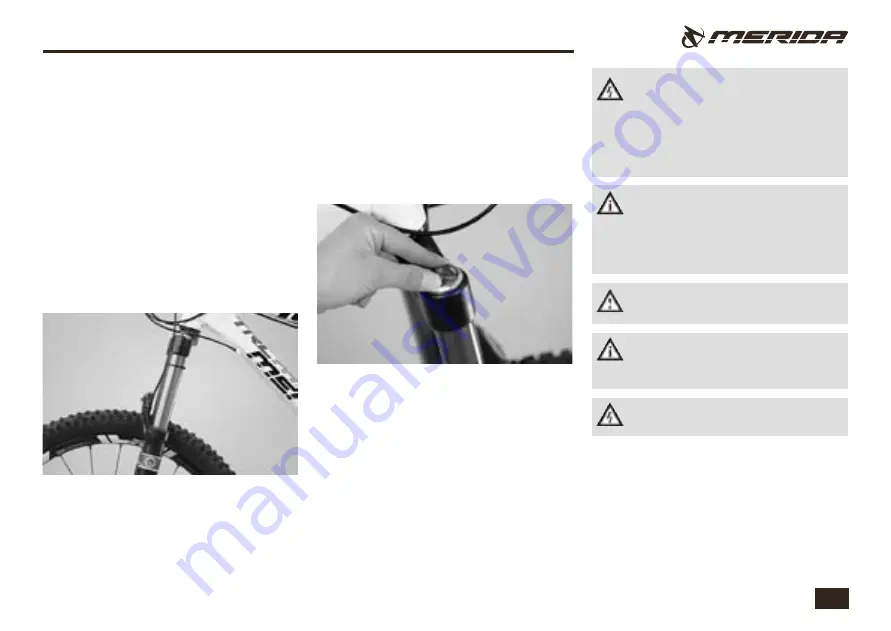
7
. The suspension fork
Generally speaking, the fork should deflect
by about 10 to 25 % of its total travel when
you sit on the bike. If this is not the case, you
have to change the initial spring tension or
the air pressure.
Ride your bike on different kinds of surface
and have a look afterwards how much of the
fork’s travel was used. If the cable binder has
only moved a few millimetres, your fork is in
too rigid adjustment or has too much pressure
in it. Check whether the initial spring tension
is at its lowest and have the springs replaced
or reduce the air pressure if it is.
If the cable binder has moved along the entire
travel range, or if you can hear the fork bot-
tom out, the spring is too flexible. Apply an
initial spring tension or increase the air pres-
sure.
If this does not help, you should have the
springs replaced by your MERIDA dealer.
After adjusting the springs to your needs you
can start optimizing the damping. Adjust it
in small steps and watch the rebound move-
ment.
Do not turn any bolts on your suspen-
sion fork in the vague hope of adjust-
ing it somehow. You could be loosening the
fastening mechanism, thus provoking an
accident. As a rule, adjustment devices are
marked with a scale or “+” and “-“ signs.
If you find it impossible to put a cable
binder around the upper fork leg, you
will need a partner to ride with you and
watch the behavior of your fork in operation
and advise you on how to adjust it.
Do not ride, if your fork bottoms out.
Adjusting a suspension fork accurate-
ly can be a long and difficult process.
If in doubt, ask your MERIDA dealer.
Never try to do any adjustment of the
fork during the ride.
Insufficient damping causes the fork to
rebound powerfully, making you feel as
though your bike is trying throw you off. The
more you close the damping mechanism, the
slower the spring responds and the softer the
rebound becomes.
Excessive damping will cause the fork to sink
in when subjected to a quick series of shocks
because the rebound movement will be too
slow.
















































